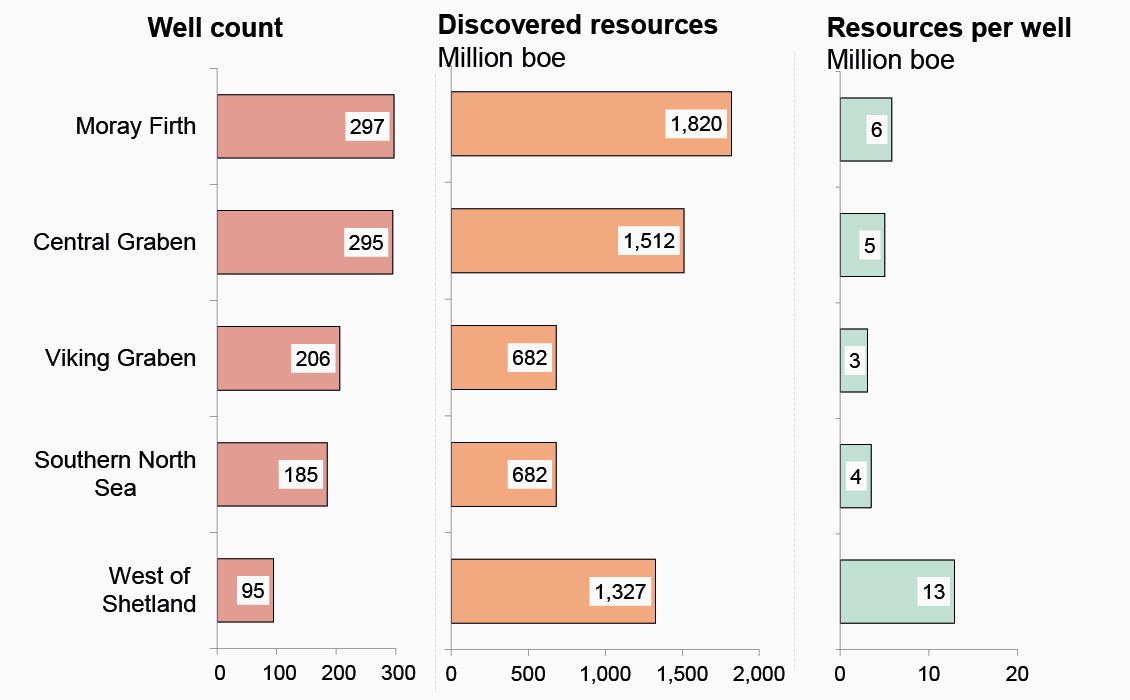The recently concluded 32nd offshore licensing round in the United Kingdom has been one of the most successful lease rounds for 2020, a year when many others were delayed or cancelled. Around 113 licences were awarded in 260 blocks or part-blocks in offers distributed amongst 65 companies. The awarded blocks are scattered across the most prospective and mature basins on the United Kingdom Continental Shelf (UKCS), including the Southern North Sea, Central Graben, Moray Firth, Viking Graben and West of Shetland.
The Moray Firth and Central Graben Basins have been the most active in terms of exploration drilling in the past two decades, with around 300 wells drilled in each, while West of Shetland is the area with the least activity during this period, with about 95 wells. Nevertheless, the West of Shetland has had an excellent rate of success, with around 1.3 Bboe in newly discovered volumes, compared to around 1.5 Bboe in the Central Graben and 1.8 Bboe in the Moray Firth Basin.
Most of the volumes in the Moray Firth and Central Graben were discovered in the early 2000s, while the West of Shetlands dominated the 2010s. The Central Graben is slowly gaining some momentum with discoveries such as Glengorm (250 MMboe) in 2019 and Isabella (90 MMboe) in 2020. Glengorm is the largest discovery on the UKCS since Culzean was found in 2008, while Isabella is the largest discovery on the UKCS so far this year.
The Moray Firth Basin has delivered 34 new discoveries between 2000 and 2020, but only the 1.07 Bboe Buzzard find from 2001 is significant in size, making up about 61% of the discovered volumes. No significant discoveries have been announced in the Viking Graben and Southern North Sea Basins, with the average discovery size hovering around 20 and 15 MMboe, respectively. By comparison, the 18 discoveries in the West of Shetland Basin include Rosebank, found in 2004, with 500 MMboe of resources, as well as Halifax from 2017 with 88 MMboe and Glendronach from 2018 with 102 MMboe. This makes the West of Shetland area the most productive in terms of volumes discovered per unit well drilled.
Going by its historic performance, the blocks awarded in the 32nd round within the Central Graben and West of Shetland have the potential to deliver some impactful discoveries. In addition, the proximity of the awarded blocks to existing infrastructure could enhance the economic viability and facilitate development of small- to medium-sized finds.
Further Reading on Hydrocarbon Exploration in West of Shetland
Exploring for Oil and Gas in the West of Shetland
Alex Birch-Hawkins, Ashleigh Hewitt, James Clarke, Dr. Jennifer Halliday and Will Bradbury; TGS.
TGS take a closer look at the prospectivity in the West of Shetland, Northen Flett Sub-Basin.
This article appeared in Vol. 14, No. 6 – 2018






